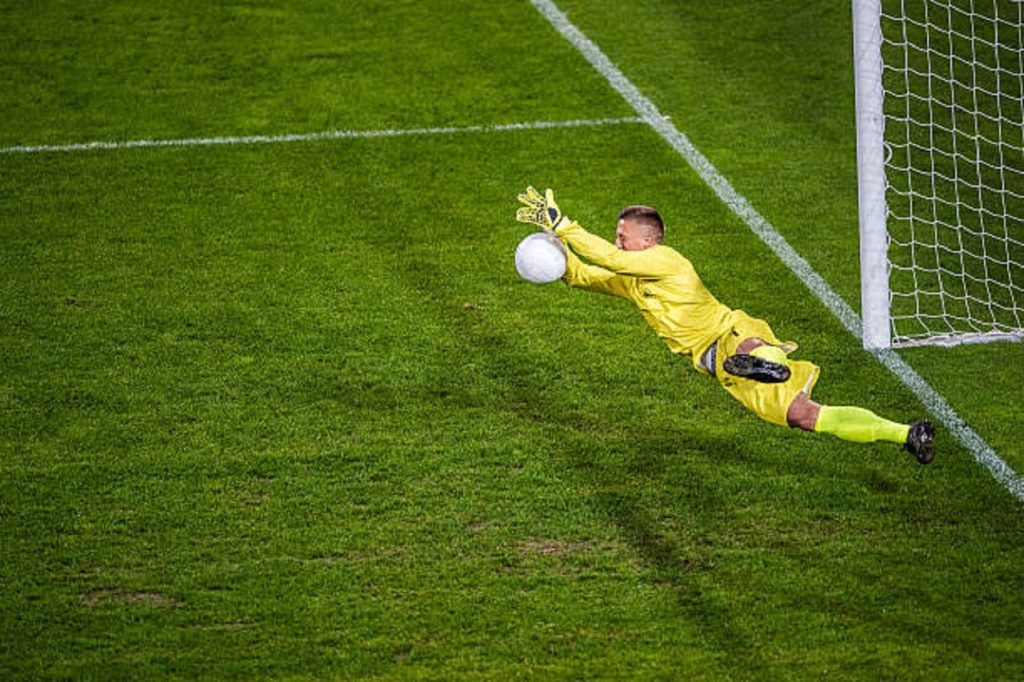In the dynamic game of soccer, goalkeepers play a vital role in protecting their team’s net. Effective goalkeeping requires a combination of skill, agility, and strategic decision-making. To enhance their performance, goalkeepers must master a range of techniques and engage in regular drills to improve their reflexes, positioning, and shot-stopping abilities.
In this article, we will explore various goalkeeping techniques, provide helpful tips, and suggest essential drills to help aspiring goalkeepers reach their full potential.
I. The Fundamentals of Goalkeeping
Goalkeeping is an art that demands a strong foundation of fundamental techniques. By mastering these techniques, goalkeepers can better position themselves, dive with precision, and make critical saves.
Here are some essential techniques to focus on:
- Proper Positioning: One of the primary aspects of goalkeeping is positioning. Goalkeepers must position themselves correctly within the goal area, considering factors such as the angle of attack, the position of opponents, and the ball’s trajectory. This technique allows them to cover more of the goal and be ready to react to shots effectively.
- Shot Stopping: A goalkeeper’s primary objective is to prevent goals. Shot-stopping involves making quick decisions, diving, or using other parts of the body to save shots on goal. Proper technique and positioning are crucial for making successful saves.
- Handling: Good handling skills are essential for a goalkeeper to control and secure the ball. This includes catching, parrying, or punching away shots and crosses. A secure grip and excellent ball control help prevent rebounds and provide the team with a solid defensive foundation.
II. Drills for Goalkeepers
To improve their goalkeeping skills, aspiring keepers must engage in regular drills that simulate game-like situations. These drills enhance reflexes, decision-making, and overall performance.
Here are some effective drills to consider:
- Reaction Time Drill: This drill focuses on improving a goalkeeper’s reaction time. Start by positioning the keeper in the center of the goal, facing the coach or another player. The coach then randomly calls out a direction, and the goalkeeper must react quickly by diving or moving in that direction. Repeat this drill with varying distances and angles to challenge the goalkeeper’s reflexes.
- Shot Stopping Drill: This drill helps goalkeepers practice their shot-stopping technique. Set up a line of cones, each representing a target area for the shots. The coach or players take turns shooting at the different target areas, and the goalkeeper must react quickly to make saves. This drill allows keepers to work on their diving, footwork, and positioning skills.
- Crosses and Distribution Drill: This drill focuses on a goalkeeper’s ability to deal with crosses and distribute the ball effectively. Set up two groups of players, one on each wing. The coach or a player serves crosses into the box, and the goalkeeper must come out, catch or punch the ball, and distribute it accurately to initiate counter-attacks. This drill improves the keeper’s aerial dominance and distribution skills under pressure.
III. Essential Tips for Goalkeepers
In addition to mastering techniques and engaging in drills, goalkeepers can benefit from these useful tips to enhance their performance:
- Communication: Effective communication with teammates is vital for goalkeepers. They should provide clear instructions, such as calling for a pass-back, marking opponents, or organizing the defense. Clear and concise communication fosters a cohesive and organized defensive unit.
- Study Opponents and Game Tactics: Goalkeepers should familiarize themselves with opponents’ tendencies and study their team’s game tactics. This knowledge enables keepers to anticipate shots, understand attacking patterns, and make informed decisions when faced with different game situations.
- Mental Focus and Confidence: Goalkeeping requires mental strength and confidence. Maintaining focus throughout the game, staying calm under pressure, and trusting in one’s abilities are key aspects of successful goalkeeping. Building mental resilience through visualization exercises and positive self-talk can significantly impact performance.
Conclusion
Goalkeeping is a challenging but rewarding position in soccer. By mastering the fundamental techniques, regularly participating in drills, and following helpful tips, aspiring goalkeepers can improve their overall performance.
Remember that practice and perseverance are essential elements of becoming an excellent goalkeeper. So, embrace the techniques, engage in drills, and develop the skills necessary to excel between the goalposts. With dedication and hard work, you can become an invaluable asset to your team and make a significant impact on the game.

